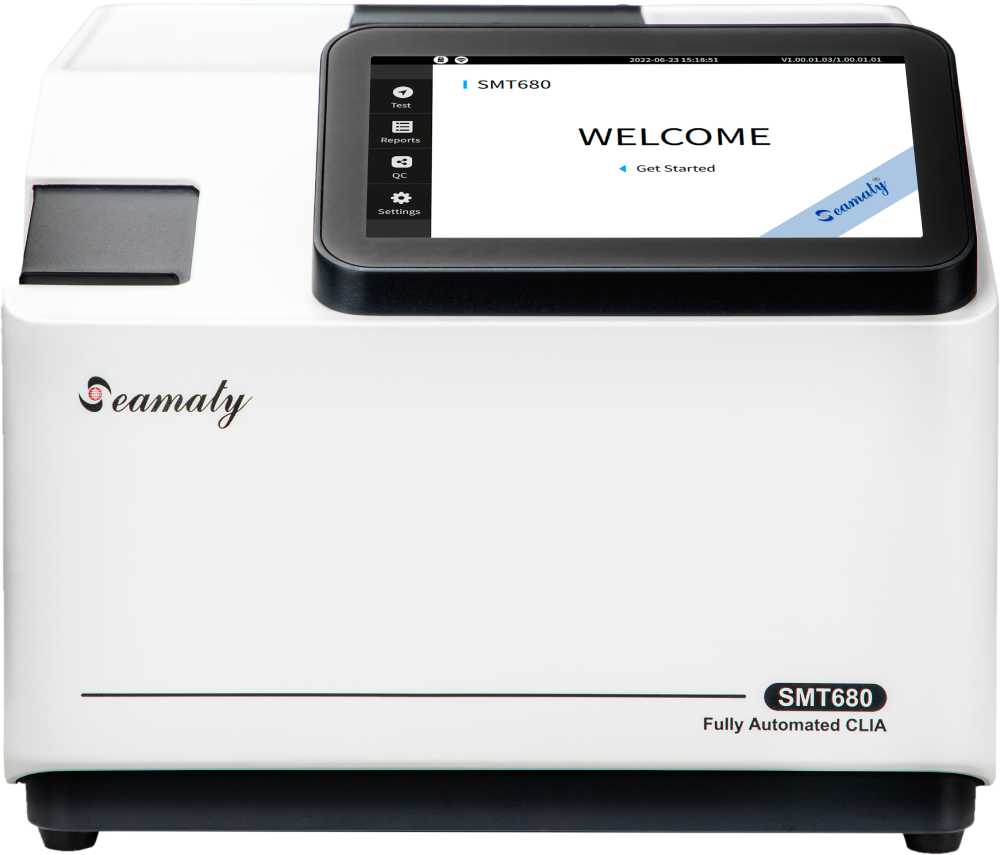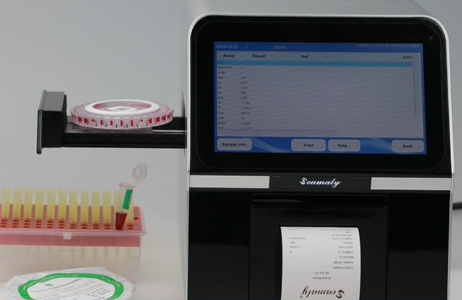Blood glucose meter to detect blood sugar is a simple, convenient and fast detection method, which is becoming more and more popular. However, some people find that the blood glucose test is different from that of automatic biochemistry for the same condition and the same patient when they use home blood glucose meter. So, what is the difference between home blood glucose meter and fully automatic biochemical meter when testing blood glucose?
Blood glucose meter detection principle
Most home blood glucose meters use electrochemical method to determine blood glucose concentration. The glucose molecules in the blood will undergo a redox reaction with the enzymes on the blood glucose test paper. When a certain voltage is applied, the current formed by the reacted blood will increase with the increase of blood glucose concentration, and according to the linear relationship between blood glucose concentration and current value. By measuring the weak current on the test strip, the corresponding blood glucose concentration is deduced.
Since the blood glucose meter detects whole blood in the fingertip capillaries. This method uses small amount of blood, rapid detection, simple operation, and the instrument is easy to carry, which is very suitable for personal self-testing use. In clinical practice, emergency rooms and operating rooms also often apply blood glucose testers in bedside examinations. However, due to more details of operation, it is more influenced by human factors and is easier to produce errors. Therefore, this method is only suitable for daily blood glucose monitoring, and cannot be used as a basis for diabetes diagnosis.
Principle of automatic biochemical instrument testing
The principle of fully automatic biochemistry test is to irradiate the colored liquid in the cuvette by a monochromatic light beam. Through the absorption of light energy by the measured sample, the detector converts the light signal into a corresponding electrical signal. The signal is amplified, rectified, and converted into a digital signal and sent to the computer. At the same time, the computer controls the drive power to drive the filter wheel and sample disk. The computer then processes, calculates, analyzes and saves the measurement data according to the working mode selected by the user. The printer simultaneously prints out the corresponding results and performs cuvette cleaning after measuring each group of samples.
The automatic biochemistry analyzer measures blood glucose by drawing venous blood. After centrifugation, serum and plasma are obtained. The test is performed automatically by a fully automated biochemical instrument. Whether before, during or after the test, strict quality control measures are taken. The accuracy of blood glucose measured by the fully automated biochemical analyzer is high. Therefore, fully automated biochemical analyzers are commonly used for diabetes diagnosis.
Seamaty fully automatic biochemical analyzer adopts the analytical principle and optical measurement technology of large desktop biochemistry, and also has a built-in real-time quality control system to ensure the accuracy of blood glucose detection.


